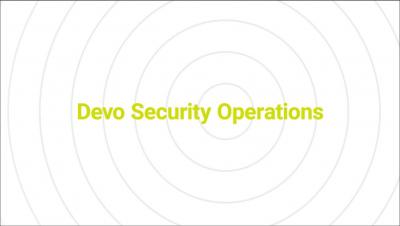Security | Threat Detection | Cyberattacks | DevSecOps | Compliance
%term
Applying Big Data to Risk Management
The era of Big Data is here. Information now exceeds fantastic proportions, globally measured in zettabytes (each zettabyte is a billion terabytes) and growing at an exponential rate that defies comprehension. According to the IDC, global data is expected to grow from 23 Zettabytes (ZB) in 2017 to 175 ZB by 2025.
How to Make Your Business HIPAA Compliant
Infosecurity Europe 2019
AT&T Cybersecurity had a big presence at Infosecurity Europe 2019 in London, June 4-6. Our theme was unifying security management with people, process and technologies. While the industry is generally moving in the right direction, IT teams still struggle with being overwhelmed on the technology side, not knowing where to begin on the process side, and finding (or being able to afford) people with the right security skill sets.
Industry Analysts Recognizing Cloud Analytics Brings Wave of Disruption to the SIEM Market
In the new report, “Analytics is making its security operations mark ahead of schedule,” analyst firm 451 Research details the accelerating transition happening in the security information and event management (SIEM) space. The report underscores how new cloud-native analytics solutions are displacing traditional SIEMs at the heart of the defense.
Devo for Security Operations
Infosecurity 2019 Timelapse: Tripwire Edition
The Tax Paying Hacker: A Modern Phenomenon
In a dark room lit only by the light from four computer monitors sits a hacker named Hector (not his real name). You can hear the faint pulse of an EDM track coming from his headphones as Hector taps away on his computer’s keyboard. The above description could serve as the setting for a hacker movie set in the early 2000s. But it doesn’t work in today’s context. Nowadays, Hector sits in a brightly lit room with multiple screens at his disposal.
What Public Sector CISOs Should Take Away from Verizon's 2019 DBIR
It’s been a few weeks since Verizon released the 12th edition of its Data Breach Investigations Report (DBIR). For this publication, Verizon’s researchers studied 41,686 security incidents in which a response was necessary. These analysts found that 2,013 of those incidents were data breaches in that some sort of information was actually compromised.
What are Appropriate Authentication, Authorization, and Access Control Technologies?
Authentication, authorization and access control are three paramount cyber security concepts that are often confused and used interchangeably. It might be because these three are usually perceived as one single process by the end user, yet it is critically important to understand the distinction while designing the security framework.









